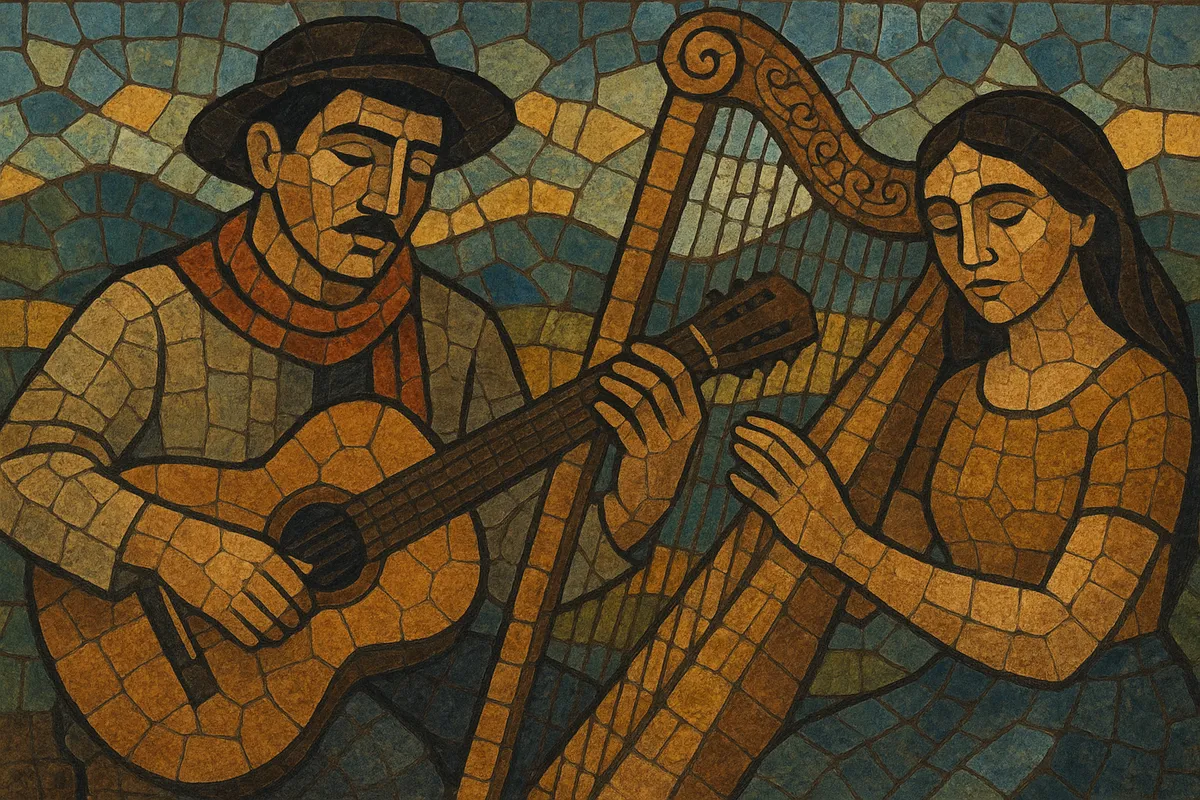Guarania is a Paraguayan song form created in the late 1920s by composer José Asunción Flores to give a lyrical, urban-poetic voice to the Guaraní people.
It is characterized by slow to moderate tempos, cantabile melodies, and a gently swaying compound meter (often 6/8, sometimes felt in 3/4), which together create an intimate, reflective mood.
Typical instrumentation centers on voice accompanied by Paraguayan harp and guitars, with optional violin, piano, or accordion; arrangements often feature arpeggiated harp figures and soft guitar pulses.
Harmonies draw from European Romanticism but remain diatonic and songful, frequently in minor keys, highlighting bittersweet themes of love, homeland, and longing. Lyrics commonly mix Spanish and Guaraní, reinforcing the genre’s cultural identity and emotional depth.
José Asunción Flores devised guarania in Asunción in the late 1920s as a deliberate turn from the brisk rural dance of polka paraguaya toward a slow, lyrical urban song. Collaborating with poet Manuel Ortiz Guerrero, Flores composed emblematic early guaranias such as "India," fusing Romantic-era harmonic language with local melodic sensibilities and the Guaraní-Spanish poetic tradition.
Guarania quickly became a national emblem. Singers and composers including Agustín Barboza, Eladio Martínez, Herminio Giménez, and Mauricio Cardozo Ocampo expanded the repertoire, popularizing the style on radio and in concert halls. The genre’s introspective tone and bilingual lyrics resonated with themes of nostalgia, love, and homeland, securing guarania’s status as Paraguay’s signature urban song form.
Paraguayan ensembles and soloists, notably Luis Alberto del Paraná and Los Paraguayos, toured internationally, bringing guarania to broader Latin American and European audiences. Its poetic melancholy influenced neighboring regions with strong Guaraní cultural ties, and guarania songs entered the repertoires of folk and popular singers across the Southern Cone.
Today, guarania remains a pillar of Paraguayan identity. It is performed both in traditional formats (voice, harp, guitars) and in updated arrangements that incorporate piano, strings, or light pop-jazz harmonies. Contemporary artists maintain the genre’s lyrical soul and bilingual expression while adapting production and performance practices to modern stages and recordings.


